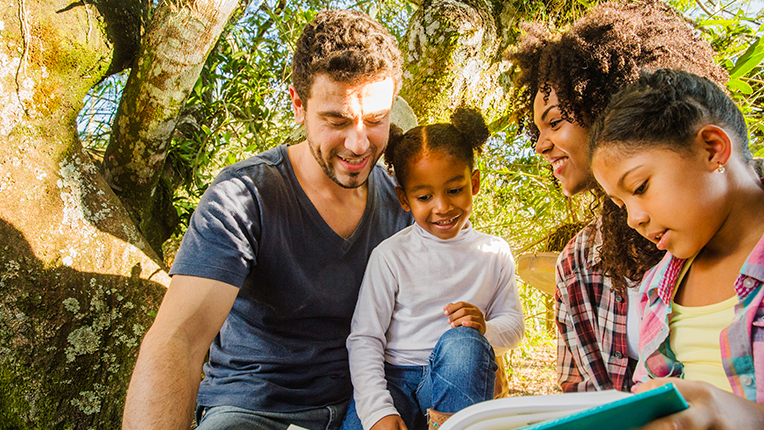Books have great power: They can transport us to imaginary worlds, awaken our emotions, and most importantly, transmit knowledge. They are a powerful tool for teaching children about history and culture in an engaging and meaningful way. Through the pages, children can explore different eras, discover cultural traditions, and develop a deeper understanding of the world around them.
How stories promote knowledge about history and culture
Children’s stories are a wonderful way to introduce children to the exploration of history and culture in an accessible and engaging way. Although simplified, these stories can convey historical and cultural concepts in ways that children can understand and appreciate. Here is how children’s stories foster exploration:
Simplifying complex concepts: Children’s stories can present historical events and cultural concepts in a simplified way that is easy for children to understand. This gives them a foundation to gradually understand history and cultural diversity.
Emotional connection to create interest: Children’s stories are often funny and focus on characters and situations that children can easily relate to. This encourages children to become interested in the stories and cultures of people from different times and places.
Teaching cultural values: Many children’s stories include lessons on cultural values and traditions. These stories can convey messages about the importance of diversity, tolerance, and respect for other cultures.
Introduction to historical figures: Children’s stories often present historical figures in contexts understandable to children. This can make children curious to learn more about these figures and their impact on the story.
Exploring Traditions and Customs: Stories that are based on different cultures can introduce children to the traditions, customs, dress, and lifestyles of other parts of the world. This encourages open-mindedness and an understanding of diversity.
Fostering Empathy: By reading about characters who live in different times and cultural contexts, children can develop empathy by putting themselves in the shoes of others and understanding their way of life, challenges, and achievements.
Awareness of Time Evolution: Through stories, children can develop a basic understanding of how the world has evolved over time. They can learn about changes in technology, fashion, architecture, and more. Stories can help children make connections between history and the world they live in, highlighting how the past has influenced the present.
Critical Thinking Encouragement: Reading historical and cultural books challenges readers to question their own beliefs and biases, as well as to analyze how certain events and decisions have shaped the world today.
In short, children’s stories are a valuable tool to allow children to explore history and culture in an accessible and stimulating way. Exploring history and culture through storytelling is planting the seeds of curiosity and understanding in young minds, preparing them for deeper explorations to come.
Folk Tales
Folk tales play a vital role in understanding the world’s culture and past, as they act as narrative treasures that convey knowledge, values, and traditions rooted in the collective memory of societies. They are vivid reflections of a culture’s values and beliefs. Through characters, situations, and dilemmas, these tales reveal the social, moral, and ethical norms that guided communities in the past. These timeless stories, handed down from generation to generation through oral or written tradition, offer a unique window into the heart of past civilizations.
Exploring history and culture through storytelling results in historical preservation. Before widespread writing, oral tradition was the main way of transmitting information and knowledge. Folk tales preserve details about the daily lives, rituals, social interactions, and experiences of past generations. Cultural diversity is also manifested in folk tales. Each region and ethnic group has its own rich collection of stories that reflect its unique identity and experiences. These tales capture the essence of life in different geographical and cultural settings. Through their rich and varied narrative, they offer an intimate connection to the roots of societies and allow us to understand how people lived, created meaning, and passed on their heritage throughout the centuries. Its importance lies in its ability to teach us timeless lessons and give us a unique insight into the richness of the human experience throughout history. Here, is an important study where it is shown how popular tales and intercultural exchange are connected.
Children’s Historical Tales
Through fictional characters or characters based on real historical figures, children can visualize what life was like in different times and regions. These stories encourage playful learning by presenting historical information in an engaging and easy-to-understand way. Additionally, they promote empathy by putting children in the shoes of characters facing challenges and celebrating triumphs in diverse cultural settings.
Children’s historical tales, like folklore, also help to preserve and transmit cultural heritage by exposing children to traditions, customs, and values of the past. By learning about historical events and the people behind them, children develop an early understanding of world history. These stories inspire children to ask questions and seek more knowledge about the world around them, sowing the seeds for continued interest in history and culture as they grow, as well as understanding how the past influences the present.
Conclusion
In conclusion, exploring history and culture through storytelling opens magical portals that allow us to travel back in time and immerse ourselves in diverse cultures and historical moments. Through its pages, readers explore the past, understand values and traditions, and connect with humanity throughout the centuries. These stories, whether they are folkloric, historical, or simple current tales from different countries, arouse curiosity, stimulate the imagination, and offer us a unique window into experiences and contexts that we may never experience personally. Thus, tales remain invaluable links between generations and continue to enrich our understanding of history and culture. Find interesting readings in Materlu’s blog about the importance of reading in an infinite number of different fields and visit our selection of personalized books.
